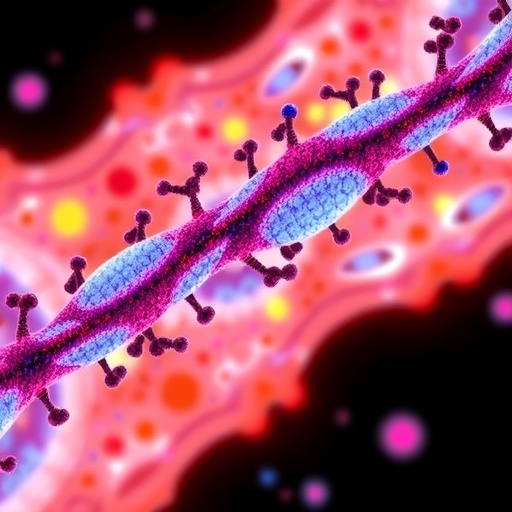A groundbreaking study from the Cognition and Social Interactions laboratory at the Institute for Neurosciences, a collaborative research center of the Spanish National Research Council (CSIC) and Miguel Hernández University (UMH) in Elche, Spain, unveils a pivotal link between a mutation associated with autism spectrum disorder and disruptions in social behavior regulation. Under the leadership of Félix Leroy, this research establishes for the first time how a mutation in the autism-related gene Shank3 impairs the neuromodulatory role of vasopressin in the brain, specifically within the lateral septum—a critical hub for social behavior processing.
Vasopressin is a neuropeptide hormone long recognized for its integral part in regulating complex social behaviors such as bonding, territorial defense, and aggression. Utilizing a genetically engineered mouse model harboring the Shank3 mutation linked to autism, the researchers discovered that this mutation leads to a distinct deficit in the release of vasopressin within the lateral septum. This deficit profoundly alters social interactions, revealing a novel mechanistic insight into how genetic mutations affect social circuits in the brain.
The study delved deeper into the neuroanatomical substrates involved, demonstrating that mutant mice exhibited a loss of a subpopulation of vasopressinergic neurons located in the bed nucleus of the stria terminalis (BNST). The BNST is known to send vasopressinergic projections to the lateral septum, where vasopressin release influences social behavior. The diminished vasopressin release in the lateral septum accounts for the impaired sociability and attenuated territorial aggression observed in male Shank3 mutant mice.
A particularly remarkable aspect of this research is the identification of two distinct vasopressin receptor pathways in the lateral septum with specialized behavioral functions. Receptor AVPR1a chiefly modulates sociability, facilitating the ability of animals to engage with conspecifics, while receptor AVPR1b governs defensive aggression, critical for territorial defense. Manipulating these receptors independently enabled the researchers to selectively restore social approach behaviors without reactivating aggressive responses, a finding that holds immense therapeutic promise for addressing social deficits without exacerbating aggression.
Complementing this receptor mapping, the team leveraged a state-of-the-art vasopressin biosensor, developed in collaboration with Yulong Li’s group at Peking University. This biosensor is a novel tool, enabling real-time visualization of vasopressin release dynamics in vivo with unprecedented spatial and temporal precision. The application of this technology revealed that the vasopressin release deficit associated with the Shank3 mutation is highly circuit-specific, confined to the lateral septum rather than widespread across the brain, underscoring the precision of neuromodulatory disruptions underlying autism-related behaviors.
Computational data analyses carried out in partnership with researchers at the University of Zurich further corroborated the experimental observations, reinforcing the robustness of the findings through sophisticated modeling and statistical validation. This interdisciplinary approach combining experimental neurobiology with computational neuroscience exemplifies a new standard in decoding complex brain-behavior relationships.
The translational potential of this work is underlined by a patent filing aimed at developing pharmacological agents that selectively activate the vasopressin receptor AVPR1a. Such agents could serve as targeted therapies to ameliorate social impairments in individuals with autism spectrum disorders by enhancing sociability, all while minimizing side effects linked to increased aggression. The selective receptor targeting strategy exemplifies precision medicine approaches tailored to neural circuitry.
This investigation was conducted exclusively in male subjects due to the pronounced development of the vasopressin system and the manifestation of territorial aggression behaviors primarily in males. The sex-specific neurobiology noted may illuminate part of the epidemiological bias observed in autism diagnoses, where males are more frequently affected, and suggests that sex differences must be carefully considered when designing interventions.
Supporting researchers postulate that females with autism might present divergent clinical phenotypes or remain underdiagnosed, emphasizing the importance of personalized treatment paradigms that account for neurobiological and behavioral sex differences. Such an approach could revolutionize the therapeutic landscape for autism and social behavior disorders.
The broader research program, MotivatedBehaviors (H2020-ERC-STG/0784), funded by the European Research Council, aims to dissect the role of the lateral septum in motivated behaviors, intending to unlock how disruptions in this brain region contribute to behavioral deficits observed in neurodevelopmental disorders. This study significantly progresses that mission by elucidating molecular and circuit-level mechanisms influencing social behavior.
Félix Leroy’s group has amassed extensive expertise investigating the lateral septum and its connections. Their previous work, published in the journal Cell in 2023, characterized the suppression of social interaction via corticoptropin-releasing hormone signaling from the prefrontal cortex to the lateral septum, framing a context for the current advances in neuromodulatory understanding.
The research endeavors benefited from robust financial support, including grants from the European Union’s Horizon 2020 program, the Generalitat Valenciana’s CIDEGENT fellowship, the Severo Ochoa Foundation, and international funding sources such as the U.S. National Institutes of Health, China’s National Natural Science Foundation, and the Swiss National Science Foundation. These collaborations and support systems highlight the global commitment to unraveling the neuroscience of autism.
Ultimately, this transformative study not only elucidates a vital link between the Shank3 mutation and vasopressin-mediated social behavior regulation but also charts a course towards developing refined, receptor-specific interventions that could restore social functioning in autism spectrum disorder. This breakthrough offers hope for novel therapies tailored with unprecedented specificity, paving the way for a new era of neuropsychiatric treatment innovation.
Subject of Research: Animals
Article Title: Impaired vasopressin neuromodulation of the lateral septum leads to social behavior deficits in Shank3B+/- male mice
News Publication Date: 23-Jul-2025
Web References:
https://doi.org/10.1038/s41467-025-61994-6
Image Credits: Instituto de Neurociencias UMH CSIC
Keywords: Autism, Developmental disabilities, Vasopressin, Neuropharmacology, Behavior modification, Human behavior, Human social behavior




